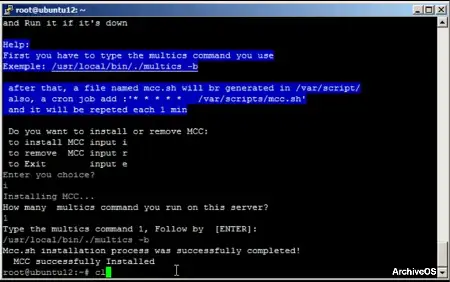Last Updated on: 20th July 2023, 12:58 pm
Web site: debian.mcc.ac.uk/non-debian/mcc-interim/
Origin: United Kingdom
Category: Desktop
Desktop environment: CLI
Architecture: x86
Based on: Independent
Wikipedia: MCC Interim
Media: Install
The last version | Released: 2.0+ | November 4, 1996
MCC Interim Linux – a Linux distribution first released in February 1992 by Owen Le Blanc of the Manchester Computing Centre (MCC), part of the University of Manchester. It was the first Linux distribution created for computer users who were not Unix experts and featured a menu-driven installer that installed both the kernel and a set of end-user and programming tools.
It comes on two floppies, but there are a few others available.
The Manchester ComputING CentRE was once Manchester University Regional Computer Centre (pronounced ‘murk’) and later UMRCC. The change from ‘computer’ to ‘computing’ was made (supposedly) to mark a shift in emphasis from supporting machines to supporting the people who use them. (Some of the people who use them complain that the shift in emphasis has not yet been implemented.) The University of Manchester has been known to claim that computers were invented here, which they were if you define ‘computer’ properly.
The latest ‘interim’ release from MCC does manage to squeeze quite a lot onto TWO disks: one of which combines the boot and root disk, and one of which can be called the ‘utilities’ disk. The boot disk boots, loads its root device from the same disk, and then starts executing /etc/rc. This runs a little script which asks for the drive size, and mounts the utilities disk (which you will of course have placed in the drive when you were instructed to). The commands available on the combined boot/util combination are approximately equivalent to those on Jim Winstead’s root disk.
There are disk images which may be needed to install this release of MCC Interim Linux. Please read these instructions carefully. Every installation requires disk (3) and either disk (1) or disk (2). Installations which require SCSI drivers and non-IDE/SCSI/ATAPI CD-ROM drivers also require disk (4). Boot from the appropriate boot disk, and follow instructions.
(1) boot.1200.gz: This file makes a 5.25 inch boot floppy. You must gunzip this file before you copy it to the floppy in raw mode.
(2) boot.1440.gz: This file makes a 3.5 inch boot floppy. You must gunzip this file before you copy it to the floppy in raw mode.
(3) root.gz: This file makes the root floppy required in all installations. There are two ways to use this file:
– (a) Copy it to the floppy in raw mode without gunzipping. This is the normal way to use it. Advantages: it is faster to use. Disadvantages: it won’t work if you have 4 Mb or less of memory; you can’t easily change it.
– (b) Unzip it and copy it to the floppy in raw mode. Do this only if you need to change the disk, or to install on a system with 4 Mb of memory. It won’t work on 5.25 inch disks. Advantages: it is easier to change the disk; it works on a 4 Mb machine. Disadvantages: it is much slower to use.
(4) scsi-cd.gz: This file makes the scsi-cd driver disk. You must gunzip this file before you copy it to the floppy in raw mode. You don’t need this disk unless you need a SCSI disk driver, or a non-IDE/SCSI/ATAPI CD-ROM driver.




